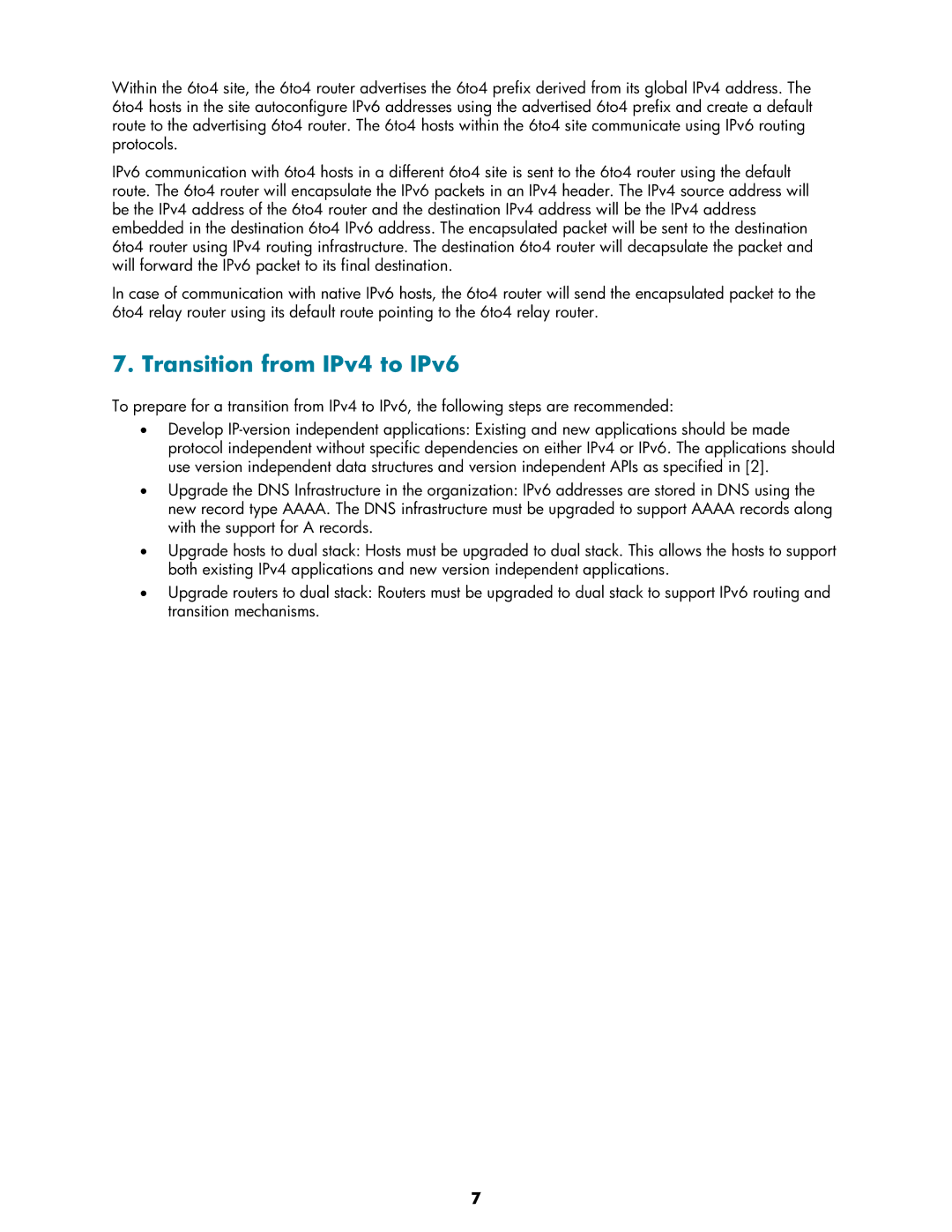Within the 6to4 site, the 6to4 router advertises the 6to4 prefix derived from its global IPv4 address. The 6to4 hosts in the site autoconfigure IPv6 addresses using the advertised 6to4 prefix and create a default route to the advertising 6to4 router. The 6to4 hosts within the 6to4 site communicate using IPv6 routing protocols.
IPv6 communication with 6to4 hosts in a different 6to4 site is sent to the 6to4 router using the default route. The 6to4 router will encapsulate the IPv6 packets in an IPv4 header. The IPv4 source address will be the IPv4 address of the 6to4 router and the destination IPv4 address will be the IPv4 address embedded in the destination 6to4 IPv6 address. The encapsulated packet will be sent to the destination 6to4 router using IPv4 routing infrastructure. The destination 6to4 router will decapsulate the packet and will forward the IPv6 packet to its final destination.
In case of communication with native IPv6 hosts, the 6to4 router will send the encapsulated packet to the 6to4 relay router using its default route pointing to the 6to4 relay router.
7. Transition from IPv4 to IPv6
To prepare for a transition from IPv4 to IPv6, the following steps are recommended:
•Develop
•Upgrade the DNS Infrastructure in the organization: IPv6 addresses are stored in DNS using the new record type AAAA. The DNS infrastructure must be upgraded to support AAAA records along with the support for A records.
•Upgrade hosts to dual stack: Hosts must be upgraded to dual stack. This allows the hosts to support both existing IPv4 applications and new version independent applications.
•Upgrade routers to dual stack: Routers must be upgraded to dual stack to support IPv6 routing and transition mechanisms.
7
